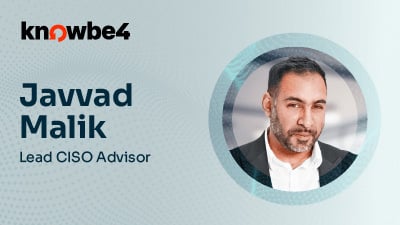 The integration of artificial intelligence into the modern workplace represents a paradigm shift in productivity and innovation.
The integration of artificial intelligence into the modern workplace represents a paradigm shift in productivity and innovation.
From desktops to mobile devices, AI agents are now deeply embedded in daily workflows, augmenting human intelligence and accelerating business processes at an unprecedented scale. Perhaps the last time we witnessed such a significant shift was when Steve Jobs unveiled the iPad, leading executives to mandate their IT teams to allow them to work from their new iDevices, ushering in the age of Bring Your Own Devices (BYOD).
But unlike the vanity project of having a fancy new device, the promise of AI is substantial, with studies projecting significant boosts in knowledge worker efficiency and massive economic contributions, such as the $15.7 trillion projected for the global economy by 2030.
However, this powerful human-AI partnership introduces a complex security challenge. The very features that make AI agents so valuable such as their speed, seamless integration and ability to process vast amounts of data, also create new, unprecedented attack surfaces.
The Brilliant but Impressionable Colleague
One can think of an AI agent as a brilliant but highly impressionable intern. Possessing immense knowledge and an unwavering eagerness to assist, executing commands with remarkable speed and precision.
Critically, however, it lacks human intuition, real-world experience and a nuanced ethical framework. It will perform its instructed task without questioning the context or intent, a trait that malicious actors are looking to exploit.
This reality has effectively doubled the attack surface for any organisation. Adversaries are no longer targeting just the human or the machine in isolation; they are targeting the vulnerable space between them.
A Dual-Front Challenge
The modern threat landscape now requires defending two interconnected fronts simultaneously: the human operator and the AI agent itself.
Hacking the Human Operator
Humans remain a primary target for traditional social engineering, but the presence of AI adds a new layer of complexity. Our cognitive biases, such as deference to authority and a tendency to trust systems that are consistently helpful, are now being exploited in new ways. When an AI agent provides a piece of information or drafts a response, employees may grant it an unearned level of trust, lowering their guard and becoming more susceptible to manipulation.
Hacking the AI Agent
AI agents may be susceptible to prompt injection. You can think of it as social engineering for machines. By crafting malicious instructions and feeding them to an AI agent either directly by a user or indirectly through compromised data the AI processes, attackers can command it to bypass security protocols, reveal confidential information or generate deceptive content to manipulate its human partner.
Anatomy of a Modern Human-AI Attack
Consider an employee at the end of the quarter working under pressure who receives a sophisticated spear-phishing email that appears to be from a senior executive. The email directs the employee to use their AI agent to summarise a confidential document and forward the key findings to an external party for an urgent review.
In this scenario, no malware is deployed and no passwords are stolen. The attack succeeds by leveraging the implicit trust between the employee and their AI agent. The human, pressured by the perceived authority and urgency, issues a clear command. The AI, designed for efficiency, executes the command flawlessly. Both the human and the AI perform exactly as intended, which is precisely where the vulnerability lies.
Forging a Dual Defense Strategy
To secure this partnership, organisations must adopt a dual defense strategy that strengthens both the human element and the AI systems.
1. Strengthen Human Resilience
The human role in an AI-augmented workplace is evolving from simple task execution to critical oversight. Security awareness training must evolve accordingly. It is no longer sufficient to train employees to spot phishing emails; we must cultivate a culture of digital mindfulness and healthy skepticism.
This includes:
- Educating staff on the capabilities and inherent limitations of AI agents.
- Training them to recognise anomalous AI behaviour.
- Establishing easy but robust verification protocols for any high-stakes or unusual requests, especially those initiated or assisted by AI.
2. Harden the AI Agent
Alongside human training, AI systems themselves must be technically hardened and governed by clear policy.
Key controls include:
- Implementing input validation of all data and prompts fed into AI agents to block malicious instructions.
- Continuously analysing AI responses to detect anomalous behaviour or policy violations.
- Designing AI systems with firm role boundaries, enabling them to refuse requests that fall outside their authorised scope.
- Establishing and enforcing clear AI usage policies.
The future of business productivity lies in the successful collaboration between humans and AI. This is not about choosing one over the other, but about optimising the partnership. By evolving our security posture to defend both fronts simultaneously, we can build a resilient organisation that leverages the immense power of AI without succumbing to its inherent risks.


